Fujifilm Fujinon XC 16-50 mm f/3.5-5.6 OIS
3. Build quality and image stabilization
In the photo below the tested lens is positioned between the Fujinon XF 1.4/35 and the XF 18–55 mm f/2.8–4.0 OIS.
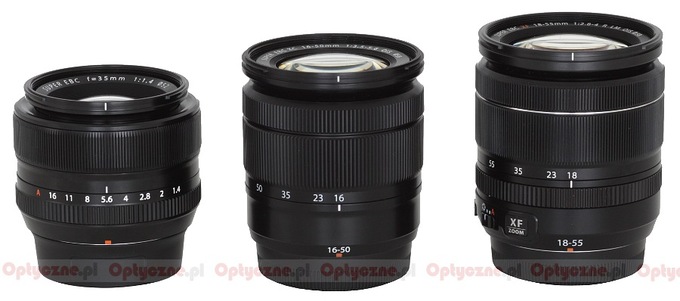 |
Please Support UsIf you enjoy our reviews and articles, and you want us to continue our work please, support our website by donating through PayPal. The funds are going to be used for paying our editorial team, renting servers, and equipping our testing studio; only that way we will be able to continue providing you interesting content for free. |
- - - - - - - - - - - - - - - - - - - - - - - - - - - - - - - - - - - - - - - - - - - - - - - -
The Fujinon XC 16–50 mm f/3.5–5.6 OIS starts with a mount made of plastics which surrounds an immobile rear element . The element is positioned on the same level as the mount and encased in such a way that its cross-section, 27x20 mm in size, is almost rectangular. It is a very interesting solution, ensuring that the whole construction is sealed from the side of the mount.
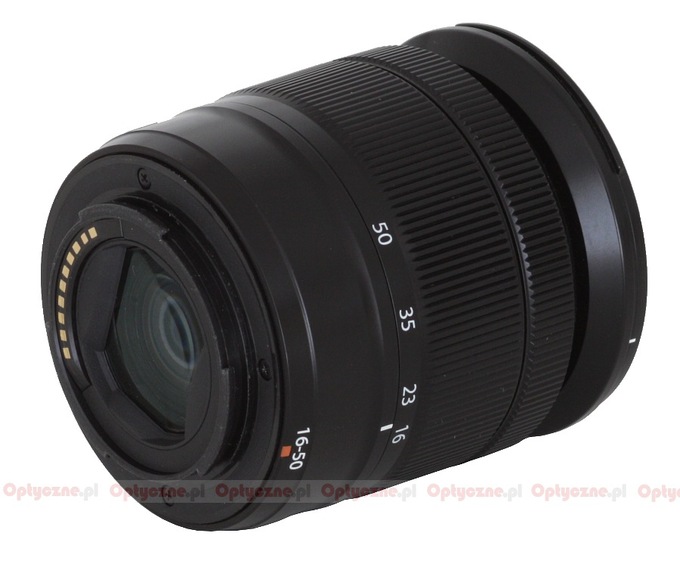 |
An immobile ring is the first part of the proper body of the lens, 19 mm wide, with a red square making the alignment with a camera easier, an inscription ’16-50’ and a sticker with the serial number, the name of the lens and info that it was made in China. It is worth mentioning here that the top-of-the-range Fujinon XF series lenses are still produced in Japan.
The biggest part of the lens’s tube is a zoom ring, 24 mm wide, most of its surface covered by fine ribbing. Below the ring you can find focal lengths markings at 16, 23, 35 and 50 mm. The ring works properly well – it is smooth and well-damped in the whole range .
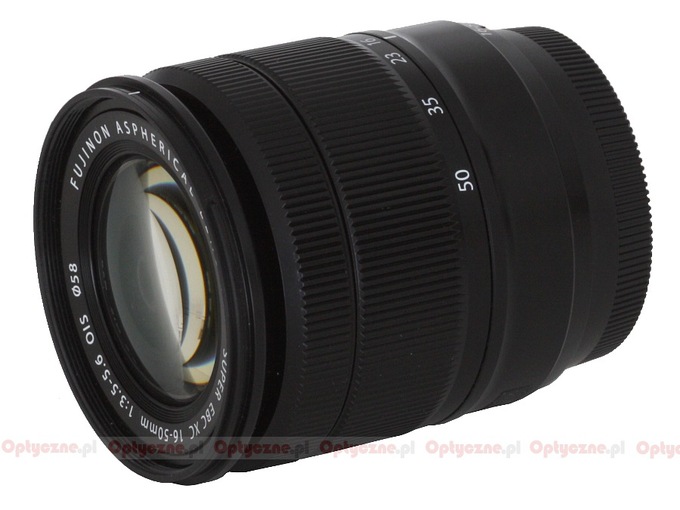 |
Further on you see a ribbed manual focus ring. It is 9 mm wide, without any markings, and its work, based on servo mechanisms, is beyond reproach.
The front element is 38 mm in diameter, surrounded by an inscription with the name and the parameters of the lens; there is also a non-rotating filter thread, 58 mm in diameter. Passing from 16 to 50 mm focal length makes the front element system extend on an uniform tube which seems to be very solid; the size of the lens can increase from 64 to 98 mm.
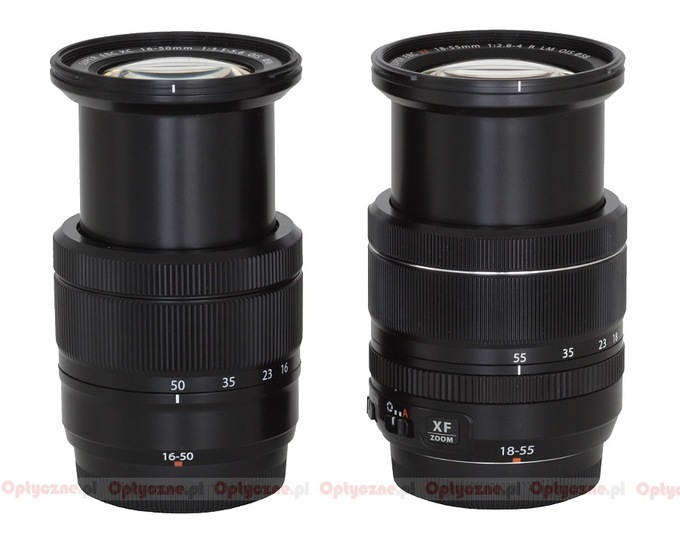 |
When it comes to the optical construction you deal here with 12 elements positioned in 10 groups. The producers boast of using as many as three aspherical elements and one element made of extremely low dispersion glass. Inside you also find an aperture with seven blades which can be closed down to f/22.
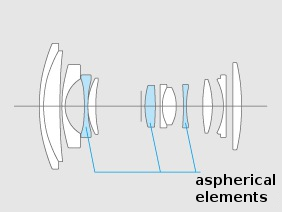 |
The buyers get just two caps in the box.
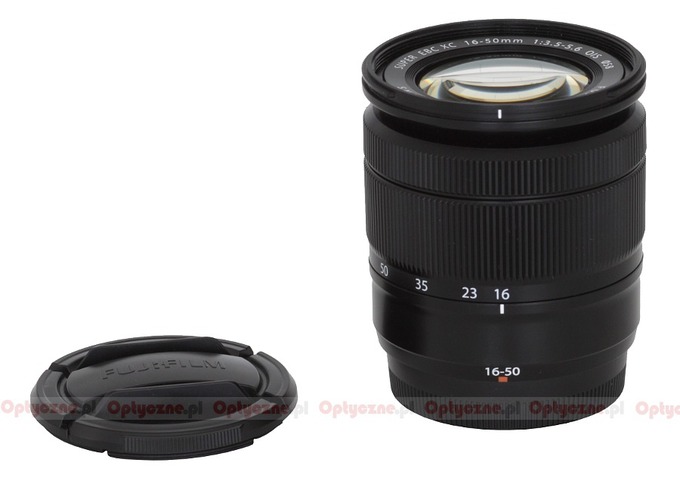 |
Optical stabilization
Our optical stabilization test was conducted at 50 mm. We took several dozen photos for every exposure time ranging from 1/60 to 1/2 of a second with the stabilization switched on and off. Then we determined the percentage of blurred photos at every exposure time – the results are presented as a time exposure function graph, expressed in EV, with 0 EV point being the equivalent of the 1/50 of a second.
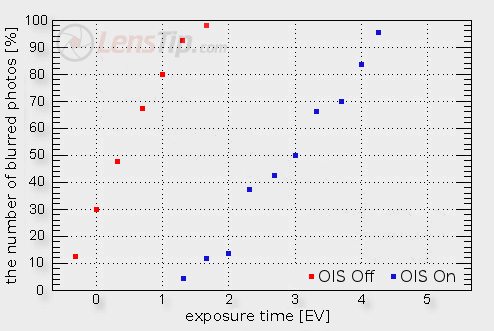
The maximum distance between the two curves is the measure of the stabilization system efficiency. In this case it amounts to less than 3 EV. It is a good result but I have to say that the best constructions, available on the market, nowadays can exceed 4 EV; even at this price point we happened to find devices which results were placed near 3.5-4.0 EV.






